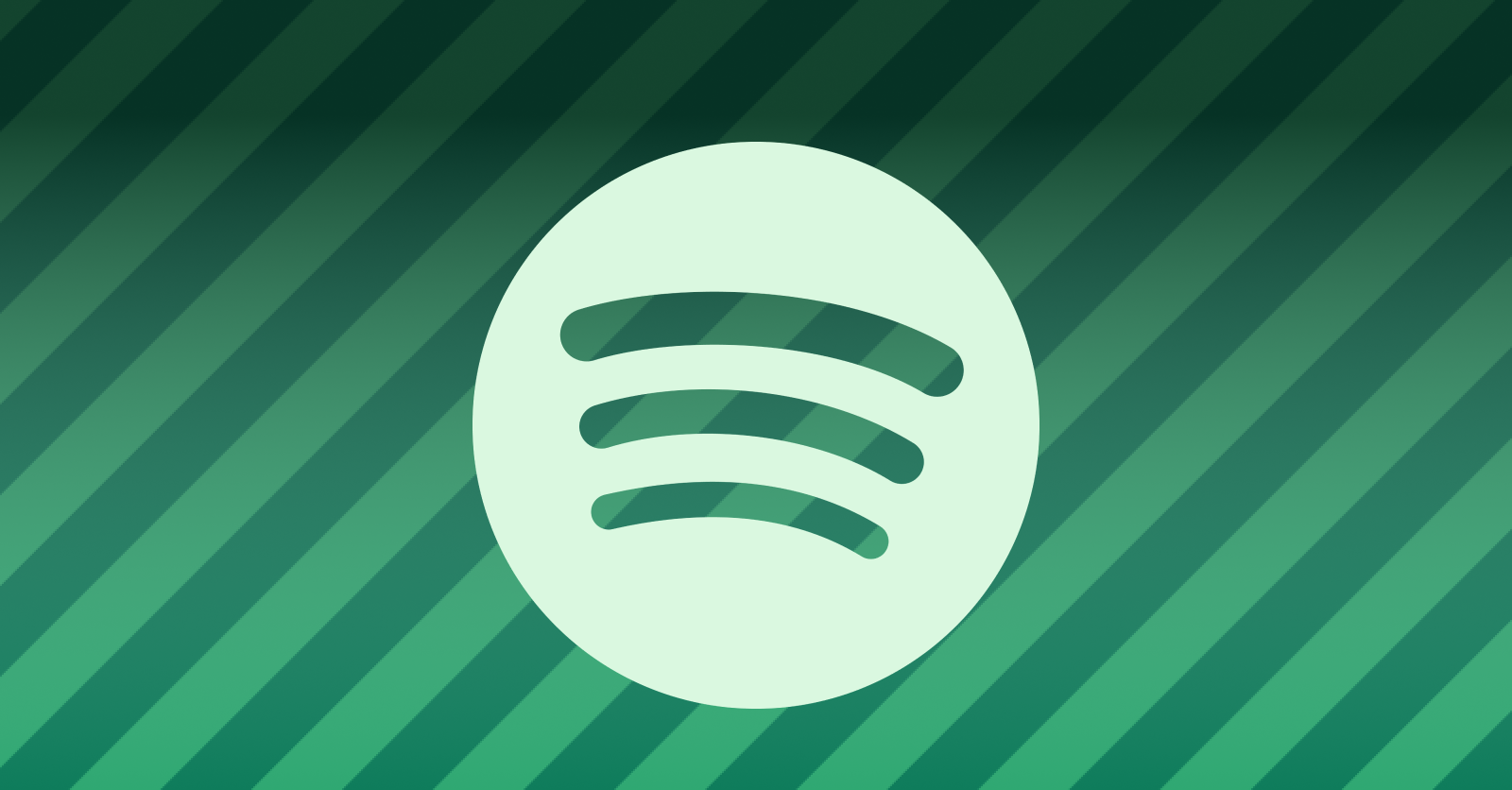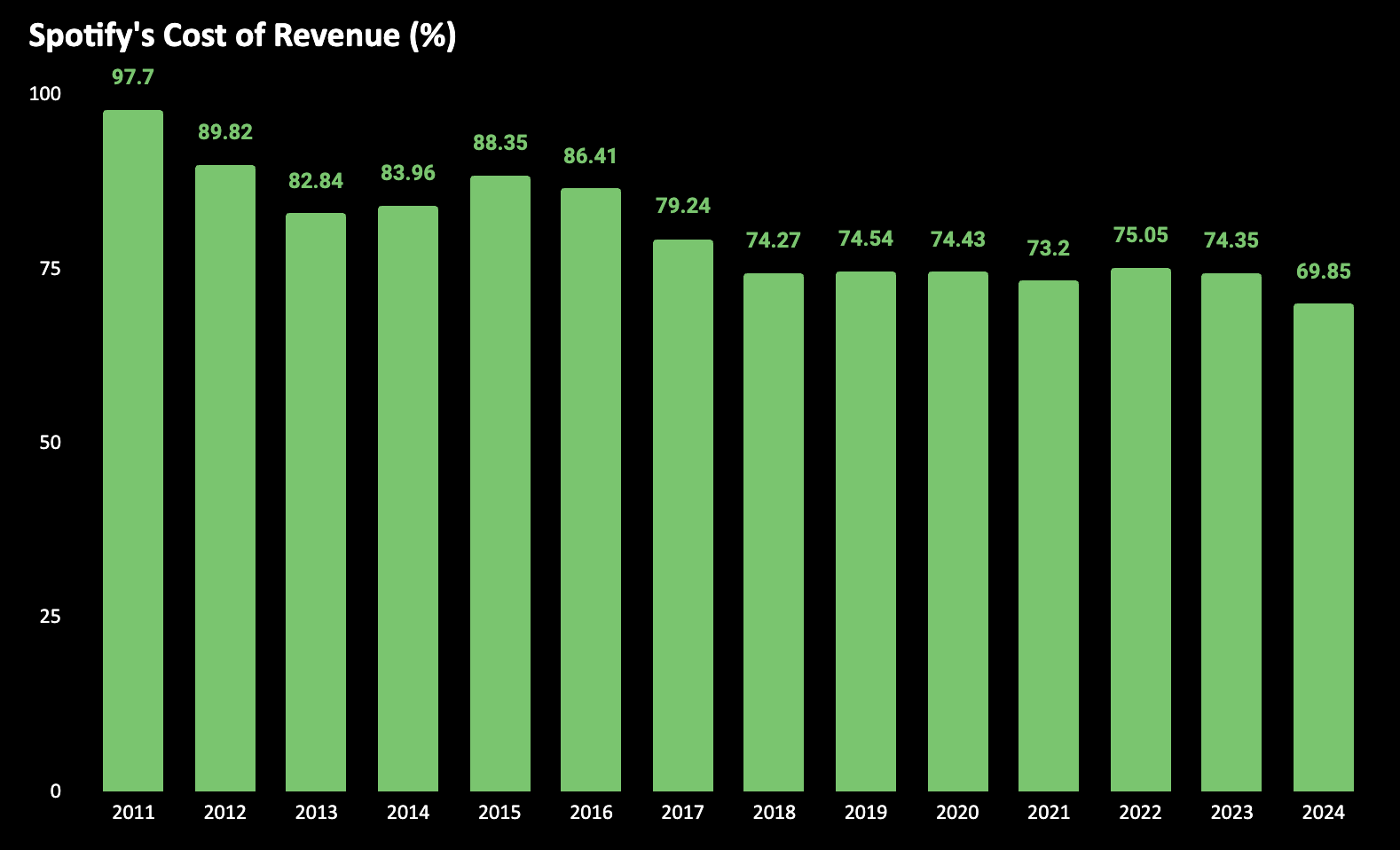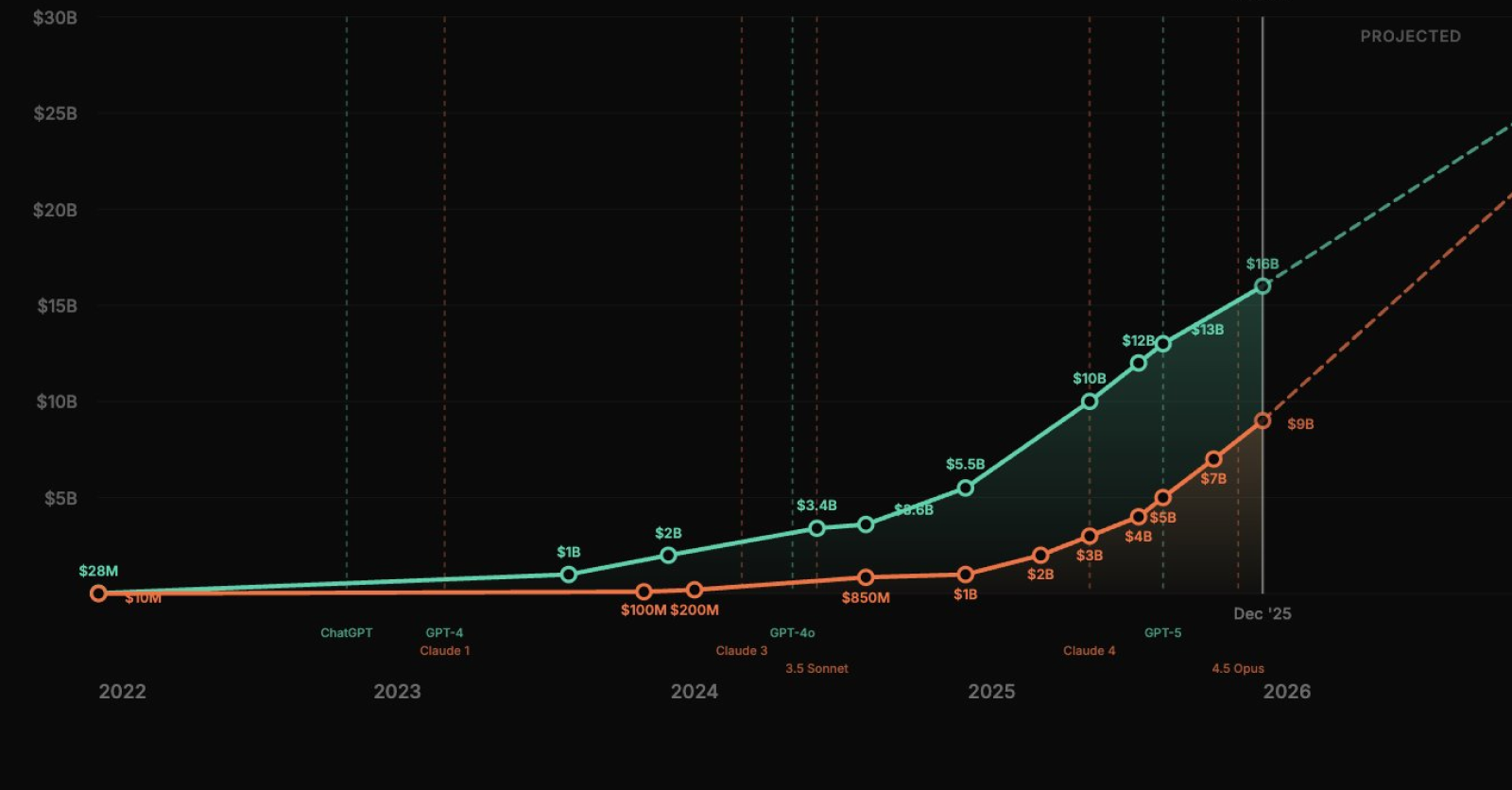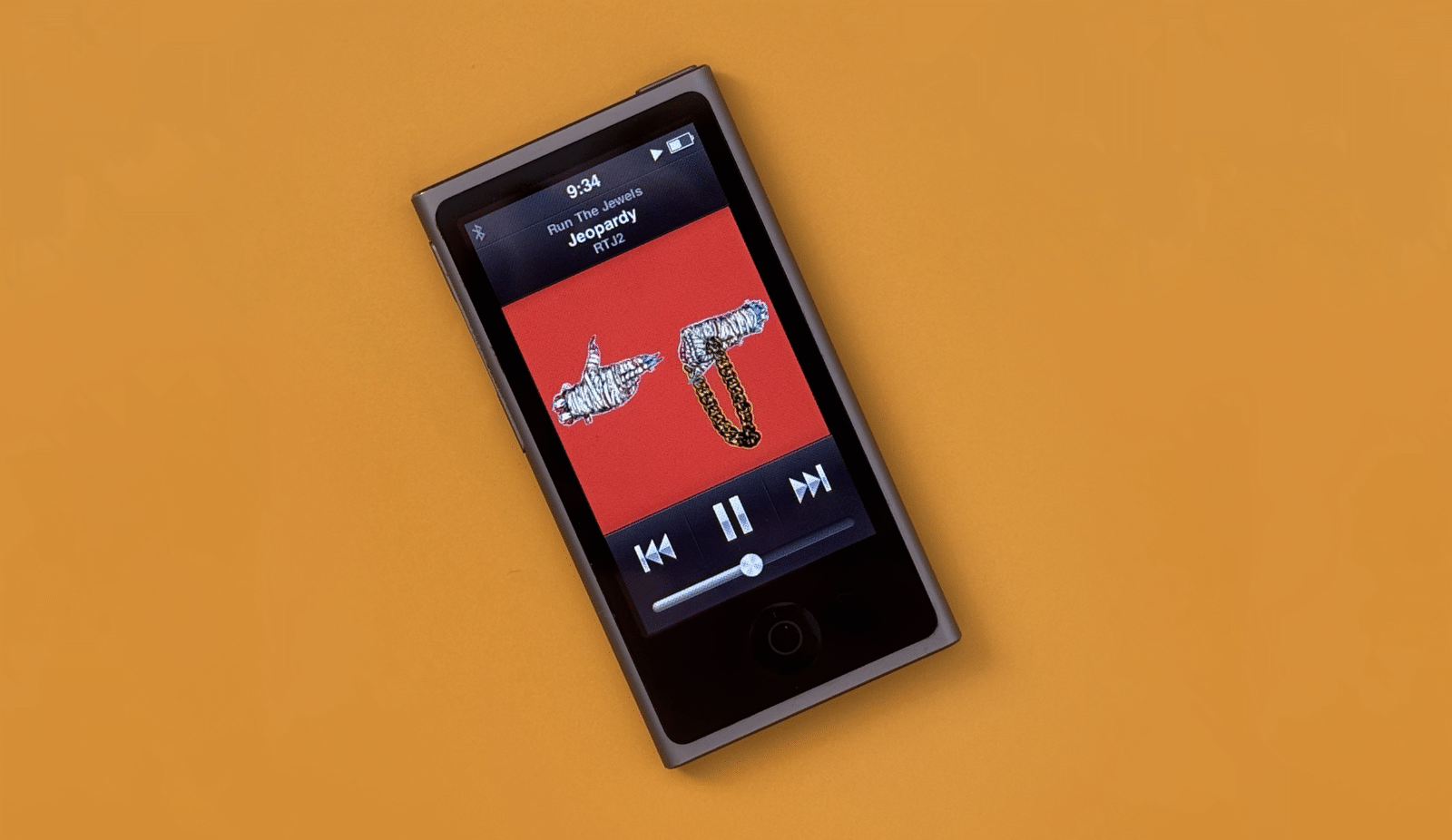How Much Spotify Pays Artists
Few things get people so worked up as Spotify’s payouts to artists. Every time this topic comes up on Twitter or Threads, you can be sure there will be hundreds of angry replies from people you can’t argue with.

Few things get people so worked up as Spotify’s payouts to artists. Every time this topic comes up on Twitter or Threads, you can be sure there will be hundreds of angry replies from people you can’t argue with.
So I wrote this post.
On Spotify, a single stream generates on average between $0.003 and $0.005 in royalties that get paid to the rights holders. Is that small?
It’s important to note these per-stream figures are not fixed prices set in a contract, but rather averages resulting from a revenue sharing model. Many streaming platforms, including Spotify, operate on a pro-rata pool system: roughly 70% of all streaming revenue gets paid out to music rights holders, divided proportionally by each rights holder’s share of total streams. This topline figure heavily depends on the earnings, which are affected by differen pricing tiers, bundles, regional pricing, etc.

For most of its history, Spotify has been paying out just around 74% of all of its revenue as royalties to right holders. As you can see from the chart, 2025 is the first year to see a sudden drop just to 69%. This didn’t happen because Spotify altered its terms with labels (they wish they could do so). It’s because the platform has been investing in other types of content, specifically podcasts and audiobooks, where they operate on different terms. The Q1 2024 has been widely recognized as the turning point for consistent profitability for the company. Before this, Spotify did show profitable quarters here and there, but never in a sustainable way.
For comparison, Apple Music’s stated headline rate (what they’re paying to right holders) is 52%. As you can see, Apple actually keeps more of their music revenue to itself compared to Spotify (who actually do some shadier things we’ll get in later). In 2021, they publicly stated Apple paid $0.01 per stream to rights holders, although independent analysts in 2023 put Apple’s average around $0.008 per stream, roughly double Spotify’s rate. How does this happen?
It’s because the actual revenue per user is different. Streaming services have different plans for individuals and families. They enact regional pricing across different countries. For instance, a month of Spotify costs just ₹139/month in India (~$1.6). This isn’t unique to Spotify, but what is unique though is the ad-supported plan, which enables the company to have 696 million users, who, on average monetize worse than the users of Apple Music or Tidal. Finally, there are discounts. Recently, Apple Music offered me three months at the price of one in an attempt to reengage me as a user. Apple will not pay out of its pocket fo any streams I do during this.
The price per stream for Spotify has actually declined from earlier years as well. For example, an analysis of an indie label’s data showed Spotify’s effective per-stream rate dropped from ~$0.0052 in 2014 to ~$0.00397 by 2017. By 2019 it had stabilized around $0.0033–$0.0035 per play, and it remains in the ~$0.003–0.005 range as of the early 2020s.
Other Streaming Services
VIRPP has gathered the data for other streaming services. Tidal offers one of the highest rates (around $0.012–$0.013 per stream as of 2023), while Amazon Music is around $0.004 and YouTube Music is very low – roughly $0.002 or less per stream. In fact, YouTube (including Content ID streams) accounted for over 50% of music streams in 2019 but only about 6% of streaming revenue – an enormous “value gap.” This implies YouTube’s effective per-stream payout is just a tiny fraction of a cent (on the order of $0.0002–$0.0007 in many cases).
In practical terms, 1 million streams on Spotify gives you around $3,000–$5,000 in royalties, whereas 1 million streams on Apple Music might pay around $8,000–$10,000. What is important is that because of Spotify’s larger audience, artists are more likely to have a larger number of streams there. And also, the royalties are paid out to right holders, which can be the label, and then it comes down to the relationship that the artist has with the label.
What is very important here is to understand that all parties, including streaming services, labels, and artists have the same incentive. The more money Spotify makes on music, the more it has to pay back, while spending the remainder on its operations. Therefore, Spotify is incentivized to maximize its total revenue. This is why they have regional pricing and the ad-enabled tier — because the company believes they’re making more money this way.
Can’t they just charge more? Streaming services constantly check the elasticity of the demand, but any time Spotify raises its subscription by $1 you get a myriad of news stories and a public outcry. Revealed preferences: people “want” artists to make more right until it’s out of their pockets. And as we saw earlier, Spotify is barely profitable and can’t pay out more.
Streaming Is Good
Streaming has massively grown the overall recorded music market by solving the piracy problem. Labels have won the most. Their previous business model was failing, but Spotify saved them by providing and establishing an alternative. As the result, in 2024 the global recorded music revenue finally surpassed the peak of the CD era in 1999, reaching $29.6 billion globally. And streaming contributes 84% of recorded music revenue in the US and about 67% globally. Since its inception, Spotify paid out over $60Bn to right holders, including the artists.
So how much do bands and artists actually get from Spotify and other streaming services? Spotify’s own data shows that in 2024, 110,000 artists earned more than $5,000 in a year, about 71,000 artists globally earned over $10,000 USD. And of those, just around 1,500 artists generated over $1 million in Spotify payouts.
It’d be correct to say that only a very small percentage of artists see substantial revenue from Spotify and other streaming services. And if the artist is signed to a label, they might only see 15–20% of that amount as their take-home. So tours and merchandise are the primary revenue source for many musicians. But… it has always been this way.
Artists Before Streaming
Let’s compare how a band might have earned money solely from record sales in the pre-streaming era (say, the CD heyday of the 1990s).
If an artist was signed to a record label, their contract would specify a royalty rate for album sales. A typical album royalty was around 10%–20% of the album’s price. Mind you, that was the wholesale price, not retail. For a $10 album sold, the band would get $1. If that album sold 100,000 copies, which would make it a gold record in countries like the UK, the band would theoretically earn around $150,000. Most bands never sold anywhere near that kind of volume! And crucially, they wouldn’t see a dime until the label “recouped” all the money it spent on recording, marketing, and tour support. Many bands never recouped and thus made $0 from their record deals.
The Internet enables artists to grow independently and distribute their music without labels. You still need a distributor to upload your albums to most streaming providers, but many offer a flat fee and let you keep all the royalties. Now an artist with a laptop can produce, publish and promote their music without leaving their apartment. The barriers to releasing music have essentially disappeared. The final boss is the Internet’s greatest villain — attention.
According to Spotify, as of early 2025, there are nearly 12 million artists who have at least one song on Spotify. A huge chunk of these are likely hobbyists or very early in their careers. Spotify itself notes about 8 million of those artists have fewer than 10 tracks released and identifies roughly ~200–250k artists as the actively “professional” musicians. It’s hard to find a truly comparable number, but considering the challenges of recording music and putting it into stores, there surely were far fewer of them. The National Endowment for the Arts in the US reported 167,000 of musicians and composers in 1990.
There’s a headline I used to see too often, which derides YouTube for how few creators actually earn a full-time income from the platform. Titles like “Most YouTubers earn little to nothing” are written to invoke anger and despair. Well, YouTube reportedly has over 65 million YouTube creators, which potentially might even include myself, since I had an uploaded video (I deleted it). Well, I’d love my blog to have as many readers as The New York Times, but I’m definitely not entitled to this. And yet, between 300,000 and 500,000 people worldwide earn a full-time income from YouTube.
Now, there are more bands getting something than in the “good old days” when, if you didn’t land a record deal, you essentially got nothing from record sales. But it does create a long tail of artists who only get a little. One 2020 study found that the top 1% of artists get the lion’s share of streams (over 60% of all streams). This is because most people listen to Taylor Swifts and Drakes of the world and not your garage band.
Today, instead of a fan paying $10 for an album once, the fan’s listening contributes to many small payments for each stream. To match the revenue of one album sale, a song typically needs hundreds of streams. RIAA has a rule for counting album sales along streaming: it’s 1,500 streams for 1 album unit.
Let’s figure this thing out. 1,500 streams multiplied by $0.004 is $6. This is more than what you’d get from a CD, but unless you go directly, the label would get 50% to 80%, and you as an artist would get ~$1.2. One advantage of the streaming model is superfans continue generating revenue for artists even if they don’t release any albums, simply by playing music on repeat.
Labels Are Kings
Spotify can’t change the terms between labels and musicians. The reason why the music and film industries are so different is in music we have an oligopoly of major labels with an extremely useful back catalog. Now, a major company can start a new movie streaming platform filled exclusively with its own content, just like Apple TV+ did, and people might pay for it. But very few people want a music streaming app that doesn’t have Taylor Swift, or Drake, or Beatles, or somebody else they like.
And Spotify does some shadier things occasionally. Apple specifically attacked them for offering different payout terms to major and indie labels. And Spotify has a system that promotes artists’ music in exchange for cutting their royalty rates. No business is simple.
But Spotify likely provides more money overall to any artist than other streaming services purely based on its scale and you shouldn’t feel bad for using it.




